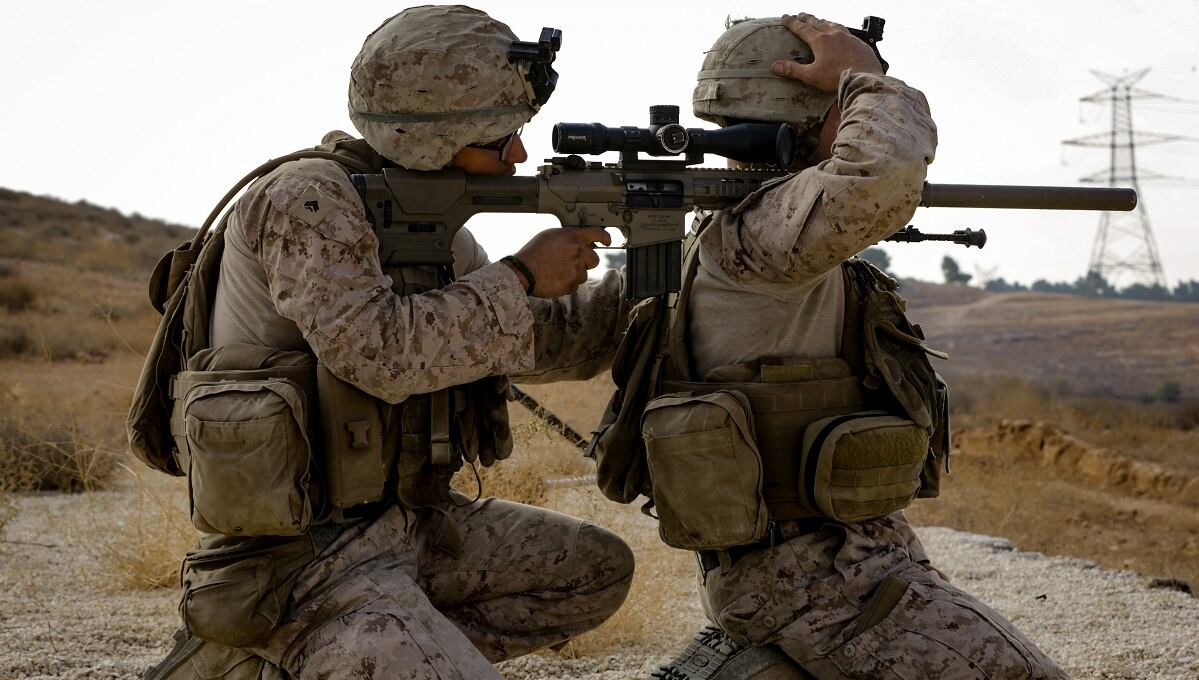WASHINGTON ― As the Marine Corps continues to reconfigure the infantry battalion, leaders also must learn how the “base unit” of the service will fit into one of its newest formations: the Marine littoral regiment.
And that’s while both the battalion and the regiment add new technologies, face new foes and fight with fewer Marines across farther distances than ever in the Corps’ history.
Col. Christopher Bronzi, director of the Marine Corps Warfighting Laboratory’s Experiment Division, and his staff on Tuesday at the Modern Day Marine Exposition laid out a multitude of experiments the lab is working that affect those formations and others.
A key feature of how the Corps learns from its various efforts is “closing the feedback loop,” Bronzi said. While the lab oversees and manages most of the service-level and high-order experimentation directed by leadership, individual units also conduct a variety of experiments.
RELATED

What commanders learn both at the ground level and back at the service’s headquarters at Marine Corps Base Quantico, Virginia, flows in both directions, Bronzi said.
“We make sure we collect and disseminate that data, regardless of where the experimentation occurs,” Bronzi said.
During the Tuesday Warfighting Lab panel directors of the infantry battalion experiments, littoral regiment experiments, contested logistics and the littoral maneuver areas of effort shared updates on their programs.
The 3rd Marine Littoral Regiment, the Corp’s first such regiment, served as the focus of a series of “stand-in forces” experiments throughout the past 18 months, officials said. Those events ranged from the Philippines-based Balikatan military exercise in 2022 and 2023 to regiment-specific training exercises, among others.
Following Phase I experimentation with the infantry battalion, Marine Corps Times recently reported, the service landed on an 880-person infantry battalion size, 811 Marines and 69 Navy support personnel, which was announced in early June in the Force Design 2030 annual update.
Now the Corps enters Phase II later in 2023 with 3rd Battalion, 4th Marine Regiment, at Marine Corps Air Ground Combat Center at Twentynine Palms, California. Experimentation should kick off by January 2024.
At the same time, ongoing experimentation and employment of the 3rd Marine Littoral Regiment in Hawaii continues at a rapid pace.
Other regimental experiments showed that the service’s Marine air-ground task force command and control rework, which includes new communications and control technology, has proven its worth in initial stages.
The Marine Corps Warfighting Lab even is using commercial, off-the-shelf radar technology in these early phases to give smaller units “maritime domain awareness” and ways to target what they sense on their own.
Some of that work showed that even a desert-dwelling infantry battalion at Twentynine Palms, California, could find strike targets at ranges not previously possible for a single unit.
“What 3rd MLR was able to demonstrate was the ability to track targets as far out as in the Pacific Ocean while they were operating in Twentynine Palms,” Bronzi said.
The combination of sensing and striking will be important for any Marine infantry battalion moving forward. That’s because though not all of the 21 infantry battalions on the current rosters will be embedded into littoral regiment, they need to be able to fit into that type of fighting when needed.
The infantry battalion remains the base unit of the formation and resides within the littoral combat team element of the regiment. Within the littoral regiment it has additional units that its non-regimental brother battalions do not, officials said, namely an engineer platoon and medium missile battery.
These mission sets are a demanding piece of developing the new battalion configuration and it’s a “key mission” for the new infantry battalion, Capt. Michael Hogan said during the Tuesday panel.
“This is one of the more challenging things they’re going to be asked to do, how do we make sure they fit within it?” Hogan said. “That’s not exclusive, of course we’re looking at the other missions as well.”
The Corps has received its share of criticism from a series of retired senior and general officers on Force Design 2030 moves.
Critics say the changes are specializing the service too much. They also raise concerns that formations won’t be able to conduct the host of mission sets that the Marine air-ground task force and Marine expeditionary unit, among other formations, have in the past.
“We can’t build the future infantry battalion without understanding how they operate as an (littoral combat team),” Hogan said.
Todd South has written about crime, courts, government and the military for multiple publications since 2004 and was named a 2014 Pulitzer finalist for a co-written project on witness intimidation. Todd is a Marine veteran of the Iraq War.








